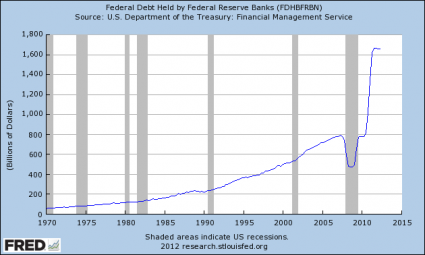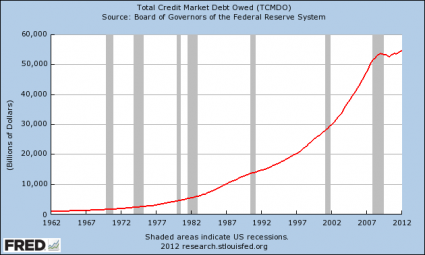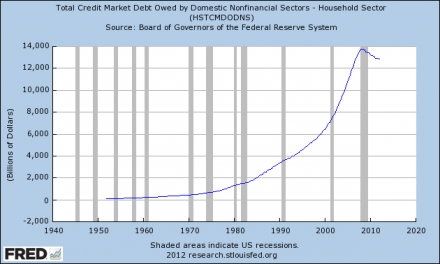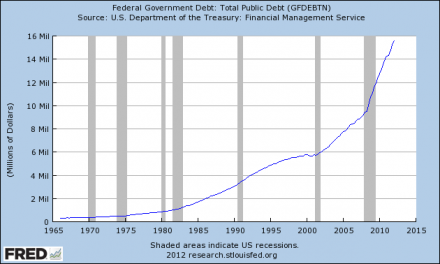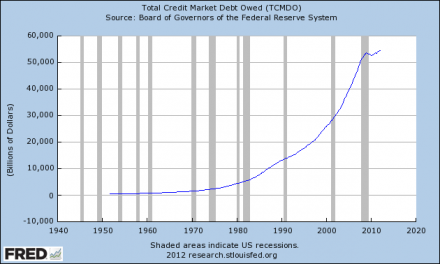 Are we running out of time? For the last several years, we have been living in a false bubble of hope that has been fueled by massive amounts of debt and bailout money. This illusion of economic stability has convinced most people that the great economic crisis of 2008 was just an “aberration” and that now things are back to normal. Unfortunately, that is not the case at all. The truth is that the financial crash of 2008 was just the first wave of our economic troubles. We have not even come close to recovering from that wave, and the next wave of the economic collapse is rapidly approaching. Our economy is like a giant sand castle that has been built on a foundation of debt and toilet paper currency. As each wave of the crisis hits us, the solutions that our leaders will present to us will involve even more debt and even more money printing. And each time, those “solutions” will only make our problems even worse. Right now, events are unfolding in Europe and in the United States that are pushing us toward the next major crisis moment. I sincerely hope that we have some more time before the next crisis overwhelms us, but as you will see, time is rapidly running out.
Are we running out of time? For the last several years, we have been living in a false bubble of hope that has been fueled by massive amounts of debt and bailout money. This illusion of economic stability has convinced most people that the great economic crisis of 2008 was just an “aberration” and that now things are back to normal. Unfortunately, that is not the case at all. The truth is that the financial crash of 2008 was just the first wave of our economic troubles. We have not even come close to recovering from that wave, and the next wave of the economic collapse is rapidly approaching. Our economy is like a giant sand castle that has been built on a foundation of debt and toilet paper currency. As each wave of the crisis hits us, the solutions that our leaders will present to us will involve even more debt and even more money printing. And each time, those “solutions” will only make our problems even worse. Right now, events are unfolding in Europe and in the United States that are pushing us toward the next major crisis moment. I sincerely hope that we have some more time before the next crisis overwhelms us, but as you will see, time is rapidly running out.
The following are 12 things that just happened that show the next wave of the economic collapse is almost here…
#1 According to TrimTab’s CEO Charles Biderman, corporate insider purchases of stock have hit an all-time low, and the ratio of corporate insider selling to corporate insider buying has now reached an astounding 50 to 1….
While retail is being told to buy-buy-buy, Biderman exclaims that “insiders at U.S. companies have bought the least amount of shares in any one month,” and that the ratio of insider selling to buying is now 50-to-1 – a monthly record.
#2 On Friday we learned that personal income in the United States experienced its largest one month decline in 20 years…
Personal income decreased by $505.5 billion in January, or 3.6%, compared to December (on a seasonally adjusted and annualized basis). That’s the most dramatic decline since January 1993, according to the Commerce Department.
#3 In a stunning move, Michigan Governor Rick Snyder says that he will appoint an emergency financial manager to take care of Detroit’s financial affairs…
Snyder, 54, took a step he avoided a year ago, empowering an emergency financial manager who can sweep aside union contracts, sell municipal assets, restructure services and reorder finances. He announced the move yesterday at a public meeting in Detroit.
If this does not work, Detroit will almost certainly have to declare bankruptcy. If that happens, it will be the largest municipal bankruptcy in U.S. history.
#4 On Friday it was announced that the unemployment rate in Italy had risen to 11.7 percent. That was a huge jump from 11.3 percent the previous month, and Italy now has the highest unemployment rate that it has experienced in 21 years.
#5 The youth unemployment rate in Italy has risen to a new all-time record high of 38.7 percent.
#6 On Friday it was announced that the unemployment rate in the eurozone as a whole had just hit a brand new record high of 11.9 percent.
#7 On Friday it was announced that the unemployment rate in Greece has now reached 27 percent, and it is being projected that it will reach 30 percent by the end of the year.
#8 The youth unemployment rate in Greece is now an almost unbelievable 59.4 percent.
#9 On Saturday, hundreds of thousands of protesters filled the streets of Lisbon and other Portuguese cities to protest the austerity measures that are being imposed upon them. It was reportedly the largest protest in the history of Portugal.
#10 According to Goldman Sachs, bank deposits declined all over Europe during the month of January.
#11 Over the weekend, the deputy governor of China’s central bank declared that China is prepared for a “currency war“…
A top Chinese banker said Beijing is “fully prepared” for a currency war as he urged the world to abide by a consensus reached by the G20 to avert confrontation, state media reported on Saturday.
Yi Gang, deputy governor of China’s central bank, issued the call after G20 finance ministers last month moved to calm fears of a looming war on the currency markets at a meeting in Moscow.
Those fears have largely been fuelled by the recent steep decline in the Japanese yen, which critics have accused Tokyo of manipulating to give its manufacturers a competitive edge in key export markets over Asian rivals.
#12 Italy is an economic basket case at this point, and the political gridlock in Italy is certainly not helping matters. Former comedian Beppe Grillo’s party could potentially tip the balance of power one way or the other in Italy, and over the weekend he made some comments that are really shaking things up over in Europe. For one thing, he is suggesting that Italy should hold a referendum on the euro…
“I am a strong advocate of Europe. I am in favor of an online referendum on the euro,” Beppe Grillo told Bild am Sonntag.
Such a vote would not be legally binding in Italy, where referendums can only be used to repeal laws or parts of laws, but would carry political weight. Grillo has said in the past that membership of the euro should be up to the Italian people.
In addition, Grillo is also suggesting that Italy’s debt has gotten so large that renegotiation is the only option…
In an interview with a German magazine published on Saturday, Mr Grillo said that “if conditions do not change” Italy “will want” to leave the euro and return to its former national currency.
The 64-year-old comic-turned-political activist also said Italy needs to renegotiate its €2 trillion debt.
At 127 per cent of gross domestic product (GDP), it is the highest in the euro zone after Greece.
“Right now we are being crushed, not by the euro, but by our debt. When the interest payments reach €100 billion a year, we’re dead. There’s no alternative,” he told Focus, a weekly news magazine.
He said Italy was in such dire economic straits that “in six months, we will no longer be able to pay pensions and the wages of public employees.”
And of course government debt has taken center stage in the United States as well.
The sequester cuts have now gone into effect, and they will definitely have an effect on the U.S. economy. Of course that effect will not be nearly as dramatic as many Democrats are suggesting, but without a doubt those cuts will cause the U.S. economy to slow down a bit.
And of course the U.S. economy has already been showing plenty of signs of slowing down lately. If you doubt this, please see my previous article entitled “Consumer Spending Drought: 16 Signs That The Middle Class Is Running Out Of Money“.
So what comes next?
Well, everyone should keep watching Europe very closely, and it will also be important to keep an eye on Wall Street. There are a whole bunch of indications that the stock market is at or near a peak. For example, just check out what one prominent stock market analyst recently had to say…
“Every reliable technical tool is warning of major peaking action,” said Walter Zimmerman, the senior technical analyst at United-ICAP. “This includes sentiment, momentum, classical chart patterns, and Elliott wave analysis.
“Most of the rally in the stock market since 2009 can be chalked up to the Federal Reserve’s attempt to create a ‘wealth effect’ through higher stock market prices. This only exacerbates the downside risk. Why? The stock market no is longer a lead indicator for the economy. It is instead reflecting Fed manipulation. Pushing the stock market higher while the real economy languishes has resulted in another bubble.
“The next leg down will not be a partial correction of the advance since the 2009 lows. It will be another major financial crisis. The worst is yet to come.”
Sadly, most people will continue to deny that anything is wrong until it is far too late.
Many areas of Europe are already experiencing economic depression, and it is only a matter of time before the U.S. follows suit.
Time is running out, and I hope that you are getting ready.
So what do you think?
How much time do you believe that we have left before the next wave of the economic collapse strikes?
Please feel free to post a comment with your thoughts below…






